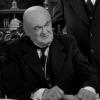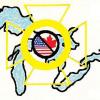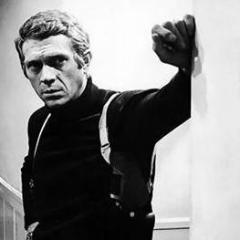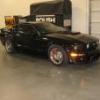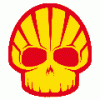-
Posts
3,521 -
Joined
-
Last visited
About Aaronw
- Birthday 11/19/1967
Previous Fields
-
Are You Human?
yes
-
Scale I Build
1/25
Contact Methods
-
Website URL
http://modelfireapparatus.com/
-
Yahoo
none
-
Skype
none
-
Facebook
none
Profile Information
-
Full Name
Aaron
Recent Profile Visitors
19,098 profile views
Aaronw's Achievements

MCM Ohana (6/6)
-

VW Golf Dash Detailing...help
Aaronw replied to Jamese30's topic in Model Building Questions and Answers
Paint the gauge clusters white, and then use a black wash. That will leave you with white highlights and dark base similar to Russel's photo of the dash. -
The $3100 is just what the seller is asking. It looks like Toyo / Sakai went out of business in 2025, but I found an archived page that had a product history. It looks like they started selling the ML210 in 1984 and the ML360 in 1986. When they moved production to South Korea they changed the name to Manix. I couldn't find anything about when that happened. I found an old post at Practical Machinist from 2009, it looks like these were still available at that time from a US distributor under the Manix brand. The ML360 cost $2300 in 2009. Toyo / Sakai was a camera maker and they went out of business in January 2025. Agree it looks like a nice machine, but I'll keep my money. I'm quite happy with my Sherline lathe and mill. 😉
-
There is a Japanese Sakai ML360 lathe / mill on Ebay right now. Looks a lot like the Unimat 3 in design, but larger, 5.9x11" vs 3.6x7" for the Unimat 3. The also made a smaller ML210 which was closer in size to the Unimat. Probably just for amusement unless you have an overly fat wallet you want to make thinner ( they are asking $3100). 🤪
-
Yeah, the Unimat with the two bars is what most are talking about when they mention the Unimat. It was available from the 1950s into the mid 1970s with fairly minor changes. A switch from cast iron to aluminum was one of the big changes. It was really a tiny multi-tool, at one time available with attachments to make it a mini-table saw, jig saw, planer, grinder, drill, lathe, and milling machine. They also made a power feed, and threading attachment. The Unimat 3 seems like a much better lathe, but it isn't trying to be 5 or 6 different tools. Lathes UK has an amazing archive of information. Other than the Chinese lathes we got in the US, I think a lot of the other small lathes were more limited in distribution, but each would still take a bite out of Emco's sales. Not a ton in the smaller than 6" size, but there are a few. Emco was Austrian made, so fairly high end machines in both quality and cost. People like cheap. In particular there is: Manix (Toyo / Sakai / Record / Proxxon) made in Japan and later South Korea. Very similar in design to the Unimat 3. Prazi / Hobbymat was East German and they had several lathes very closely matched to Emco's smaller lathes. I have a project Prazi SD300 I got for practically nothing. Mine will take quite a bit of work to get it running well, but I can see that in its prime it was a very good small lathe. The SD300 is quite a bit bigger than a Unimat 3, closer to the Emco Compact 5, but they also sold a smaller MD200. The Lathes UK site doesn't include many Chinese lathes, and the history of the Chinese lathes is rather hard to find. The classic 7" mini lathe and the 9x19" lathe sold by Harbor Freight and others was definitely around by the late 1980s. The smaller 4x6" and 6x10" lathes probably were not too far behind and those would be direct competitors (in size, not quality) for a little lathe like the Unimat 3 and 4.
-
I think it was mostly price, and competition. Emco made a range of hobby lathes from the 3" Unimat to a very high end 13" lathe. Emco seems to have gotten out of the hobby market by the early 2000s and now make industrial CNC machinery. The original Unimat came out in the 1950s, at which time there just wasn't much like it. The Atlas / Craftsman 6x18" and Myford 7 lathes were popular hobby lathes at that time, but while small, they require a dedicated bench being about 3 feet long, and 150-300lbs. These were huge in comparison to a Unimat and at least twice the price. By the 1970s you have Sherline and Taig entering the very small lathe market, and they are arguably better lathes than the original Unimat. Probably not a coincidence that Emco replaced the original series DB/SL with the Unimat 3 in the late 70s. The Unimat 3 is a better design, but it is also bigger (about the size of a Sherline or Taig, and again probably not coincidence). To reduce costs they moved production to Taiwan in the 1990s creating the Unimat 4. They broke ties with the North American distributor about the same time as the switch from Unimat DB/SL to the Unimat 3 which probably did them no favors considering the USA was the largest market for their machines. By the late 80s they were competing with a whole range of small lathes, Sherline and Taig, plus several new ones from Japan, South Korea, Taiwan and China.
-
Carter Tools is an authorized Taig reseller, and has a far better website than Taig's. Price is pretty much the same as buying direct from Taig. Nick Carter who owns Carter Tools is also a fan and user of Taig lathes, so he has a lot of info available on the site.
-
Not a table saw, more like a mini radial arm saw but possibly a useful alternative. At $149 it is more affordable than the higher quality mini-table saws, and is likely much better quality than the cheap mini-table saws. Dremel saw station
-
Very light sanding inside the collet slots may help too by removing any tiny burrs left over from the manufacturing process. Those burrs can prevent the collet from fully closing or closing equally when holding the smallest drill bits.
-

Leno's Bill / Emissions Exemptions !
Aaronw replied to 1972coronet's topic in General Automotive Talk (Trucks and Cars)
This bill is a good thing, but the article grossly overstates the difficulty of owning a "classic" car in California. The current laws only require that the factory smog equipment works. Where the real issue lays is in modifying cars, so this will help there. A '55 Chevy is essentially smog exempt, so not difficult to modify but trying to add power to a 1985 Camaro can be more challenging since it still has to pass smog. The idea that it is difficult to keep your pristine factory stock 1986 Buick Regal on the road is pretty silly. I say this as the owner of a 1985 Volvo 240. I have had zero issues keeping that car legal. Now if I wanted to stuff an LT1 under the hood, there are some hoops to go through but it can be done. This bill should help in the second case. -

Correcting the AMT Ford C-Series?
Aaronw replied to Jim B's topic in Model Building Questions and Answers
I passed over one of the more glaring errors in the kit. The air intakes behind the door are just flat. I'm sure this was to make the molding process easier, but this is a fairly visible detail. The easiest fix is just adding a little bit of styrene strip to build it up. Opening up the intakes and building out the detail would certainly look even better, but a lot more effort. -
Something about babies and bathwater. Most wikis have an editing process where other contributors can correct errors. It isn't hard. Not sure the process at Scalemates as model kit history is not something I can claim expertise in I simply use it as a resource. I have contributed to other wikis that are more in my areas of knowledge, mainly firefighting, and fire apparatus. Errors occur even in the best run organizations. The whole point of wikis is collecting information that no commercial entity will bother with. They rely on people being willing to take the time to share their knowledge. Sometimes the information people pass on is incorrect. I wouldn't understand that. I've only been wrong once, but it turns out I was wrong about being wrong so... 🤪 If people hoard all of their knowledge then it dies with them. Wikis are a good way to help ensure knowledge remains available.
-

Correcting the AMT Ford C-Series?
Aaronw replied to Jim B's topic in Model Building Questions and Answers
The SD engine continued to be offered through 1981, so as a late 70s truck, removing the cog and lightning bolt on the front of the truck, would actually make the kit pretty accurate as a C-900 since the seats are no longer an issue with that engine (as of at least 1977). -

Correcting the AMT Ford C-Series?
Aaronw replied to Jim B's topic in Model Building Questions and Answers
Another option, that may not be wrong for the truck in the photo, would be using the 385 engine out of the Revell F250/350. In 1979 Ford replaced the FT engines with the 385, the 370 as standard and the 429 was optional in the C800. As a heavier truck this engine may be more correct for a larger truck. The truck in the photo does not have the "hood ornament" between the headlights. Unless it was removed for painting the business name across the front that would make it a 1976-83 truck. This would also address the seat issue as Ford starts to show the individual seats as standard in the diesels and an option in the others by the 1977 brochure I have. -

Correcting the AMT Ford C-Series?
Aaronw replied to Jim B's topic in Model Building Questions and Answers
On the seats issue. I got my CDL in a 1970 Ford C8000 fire engine, that had bench seats. Bench seats are not listed as an option for diesels in either the 1966 or 1973 brochure I have. -

Correcting the AMT Ford C-Series?
Aaronw replied to Jim B's topic in Model Building Questions and Answers
I think probably? I'm not that big on engines, but pretty sure the FE (FT for trucks) all used the same block from 330 to 391. I know the 1960 Ford Starliner is supposed to have a good FE engine you can use.

